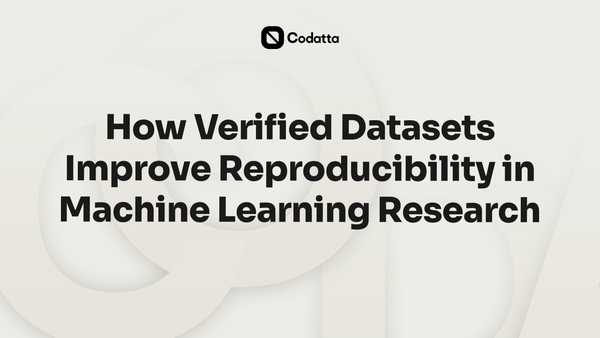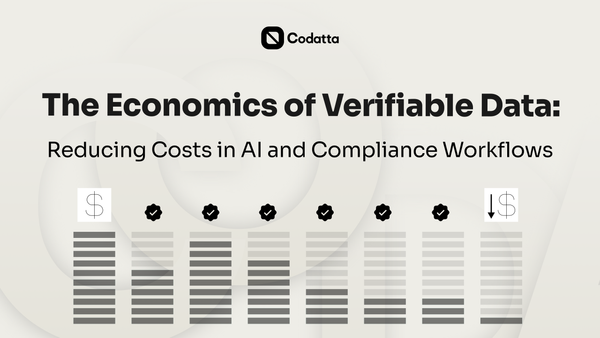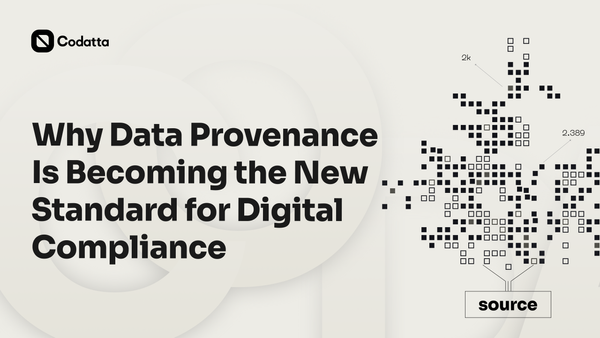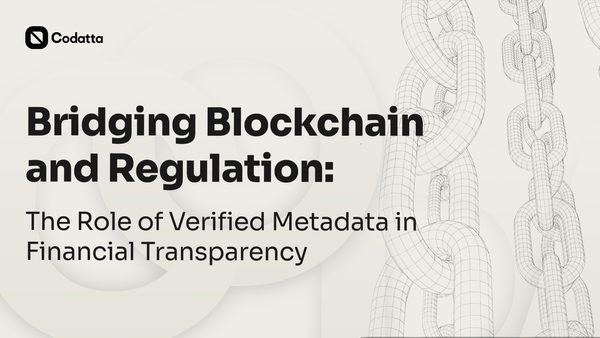FAIR Principles in Practice: How Codatta Makes Data Truly Usable
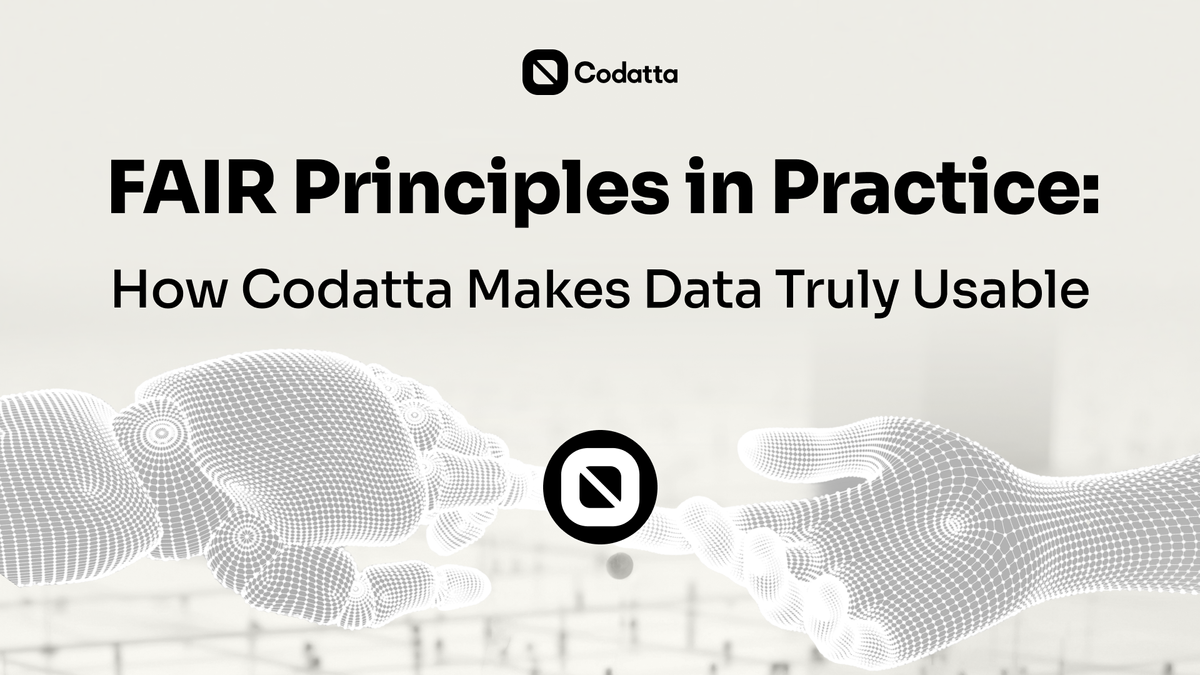
The FAIR principles (Findable, Accessible, Interoperable, and Reusable) are guiding principles for scientific data management and stewardship. They help make data and metadata easier to locate, support data sharing, and ensure research data in a data repository can be cited, accessed, and reused responsibly. FAIR data principles are essential in research, healthcare, finance, and data science, where outcomes depend on strong data standards and reliable research outputs.
In practice, many datasets fail to meet these principles. They may be described as FAIR data but lack proper metadata, interoperability, or data citation. Without clear principles for scientific data management and stewardship, the reuse of data is limited, and scientific data management plans remain incomplete.
Codatta addresses this gap with a data infrastructure built to make data FAIR in practice. Its framework strengthens data management, data and metadata integrity, and stewardship so that data objects become usable, interoperable, and reusable across domains.
Read on to see how FAIR data principles are applied in practice and how Codatta makes data truly usable.
The FAIR Principles Explained
The FAIR principles are a set of community-agreed guiding principles first introduced in 2016 in Scientific Data (Wilkinson et al., 2016, Data Science Journal). They remain central to research data management, stewardship, and open science initiatives such as Horizon 2020 research and innovation programs and the Research Data Alliance (RDA). The ultimate goal of FAIR is to optimize the reuse of data through better practices in data publishing environments, research data repositories, and data analysis and processing services.
- Findable
Metadata and persistent identifiers make datasets easier to locate within research data repositories and broader data ecosystems. Guidelines on FAIR data management emphasize that data producers and data stewards must provide rich metadata so existing data and new data sources can be found and cited. This aligns with the Joint Declaration of Data Citation Principles, which ensures proper attribution in data publishing. - Accessible
Data must be retrievable under clear, standardized conditions. FAIR data management requires that data access policies, licensing, and authentication procedures are transparent, ensuring researchers can share their data while protecting sensitive information. The GO FAIR initiative highlights accessibility as key to compliance and adoption of the FAIR data principles. - Interoperable
Data should be structured so it can work across platforms, tools, and domains. Interoperability supports integration with other data resources, enabling more effective data analysis and processing. This is critical in big data environments and in managing complex data, where interoperable and re-usable data publishing ensures different types of data can be linked within the life cycle of research data. - Reusable
Data must carry context, provenance, and licensing to enable repeated use. Reusability is achieved through clear data standards, data management plans, and alignment with FAIR implementation guidelines. FAIR compliance ensures that reusability of data holdings is maximized, making research outputs valuable beyond their initial purpose and turning FAIR into reality across scientific data management and stewardship.
These elements of the FAIR principles are now widely used in research data management, with adoption of FAIR data practices supported by the RDA FAIR Data Maturity Model and other FAIR assessment tools.
Together, they provide the foundation for researchers, data producers, and data stewards to make their data FAIR, strengthen data resources, and ensure that data within modern data environments remains trustworthy, shareable, and reusable.
Where FAIR Breaks Down in Practice
Although the FAIR guiding principles are widely recognized, their implementation often falls short. Many projects describe their outputs as FAIR data, but in practice, gaps remain. Incomplete metadata and data records, siloed research data repositories, and unclear provenance prevent effective sharing and reuse.
One challenge is that the implementation of the FAIR principles requires both cultural and technical changes. Data producers may publish open data without providing adequate context or documentation, making reuse difficult. Metadata quality is uneven, and without consistent alignment with the FAIR principles, data often cannot be integrated with other datasets or linked across domains.
Research on FAIR data management in the European Commission’s Horizon 2020 programs (European Commission, 2016) and assessments by the Research Data Alliance show that FAIR, in theory, is not always FAIR in practice. Projects may meet minimum requirements for data access but fail to achieve interoperability or true reusability. This weakens data stewardship, limits the reuse of data, and increases compliance risks in scientific data management.
How Codatta Makes Data Truly Usable
Codatta applies the FAIR guiding principles in ways that address real gaps in research data management and stewardship. Its protocol turns raw contributions into structured metadata records that are analysis-ready, compliant, and traceable across domains.
In finance, Codatta strengthens data stewardship through blockchain account annotation. Categories such as CEX or scam and entities such as Uniswap can be tagged to addresses, providing clarity for AML software, on-chain risk monitoring, and trend analysis. These annotated records give auditors and compliance officers the transparency needed to review complex data with confidence. As emphasized in the European Commission’s Guidelines on FAIR Data Management in Horizon 2020, implementation of the FAIR principles depends on being able to trace data sources across their full lifecycle.
For research and data science, Codatta’s framework supports data processing and alignment with FAIR data and services. By making metadata interoperable and reusable, it helps research data alliances, enterprises, and developers adopt shared standards and optimize the reuse of data in complex data environments.
Codatta’s model can also inform other domains where metadata integrity is critical, such as healthcare research. While Codatta does not process patient medical records, its emphasis on transparent annotation, verifiable provenance, and structured metadata demonstrates how FAIR implementation can strengthen compliance and responsible data sharing in regulated fields.
The practical impact is clear: Codatta helps align with international FAIR data management frameworks, enables researchers to share data with confidence, and gives enterprises tools to reduce risk, strengthen governance, and support the reuse of data in line with community-agreed guiding principles.
Final Thoughts
The FAIR principles remain essential for ensuring that research data is credible, reusable, and responsibly managed. They provide the structure needed for open science and effective data stewardship, but many datasets still fall short in practice.
Codatta bridges this gap by turning the theory of FAIR into usable frameworks for researchers and enterprises. Its approach supports reliable metadata, transparent provenance, and data processing that make data not only FAIR but also practical at scale.
Codatta’s work points toward a data ecosystem that is reliable, transparent, and consistently usable across domains.

